Operational amplifiers
1/34
There's no tags or description
Looks like no tags are added yet.
Name | Mastery | Learn | Test | Matching | Spaced |
|---|
No study sessions yet.
35 Terms
What is an Operation Amplifier ( Op-Amp)?
An Integrated circuit amplifier containing many transistors and resistors
What functions can Op-Amps do?
Amplification, Filtering, Multiplication, differentiation, Integration

Draw an Op-Amp
Do Op-Amps require power?
Yes from an external source (typically +15V to -15V and ground 0V)
What happens at a non-inverting input (Vp) pin?
When a signal is applied to this pin, it is amplified at the output with the same phase as the input
What happens at the interpreting input (Vn) pin?
When a signal is applied at this input pin, it is amplified at the output and inverted ( 180° out of phase)
How do you work out Vdiff for an Op-Amp?
Vp - Vn
How do you work out Voltage output of an op- amp?
gain x Vdiff
Draw a non-interpreting amplifier

Draw an inverting amplifier
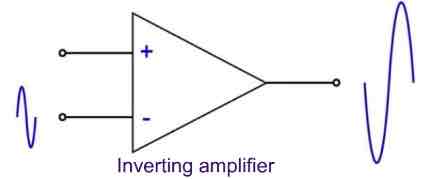
Draw an amplifier with a common input

What does offset null do in real devices?
Since the two input channels are not perfectly balanced, an output might occur, the offset allows this to be ‘ tuned out’
Name some Op-Amp Charaterstics
Usually >100,000 (the output is 100,000 times the input)
Output voltage can only range from V- and V+ (output voltage ranges between ± 15V)
To make good use of the high voltage gain, the differential voltage between the input terminals is usually very small to give a large output
It is a difference amplifier, so if the inverting input has the higher potential, the Vout is more negative, vice versa
Draw the Open-Loop Op-Amp with a high open-loop gain of 10^5 and Vin of 10 microV

Draw an Open-Loop Op-Amp with high open loop gan 10^5 and Vin 10miliV
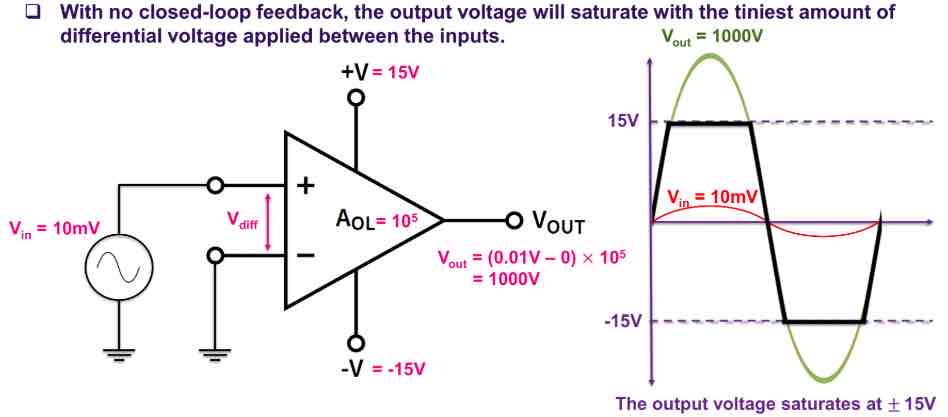
Draw a graph of Vout against Vdiff
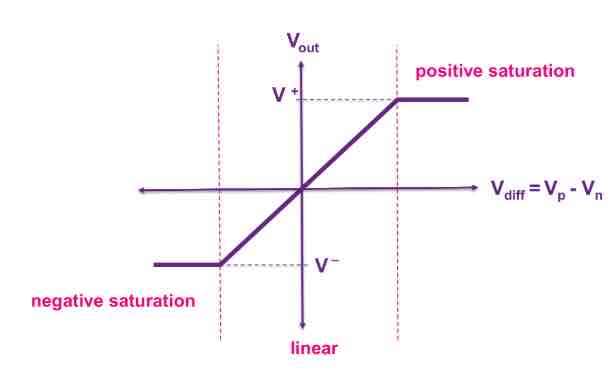
In the linear region fo a Vout against Vdiff graph, how can you work out Vout?
AOL (high voltage gain) x Vdiff
For the linear operation what is true for Vp and Vn

Draw a Vout against Vdiff using different scaled for Vout and Vdiff
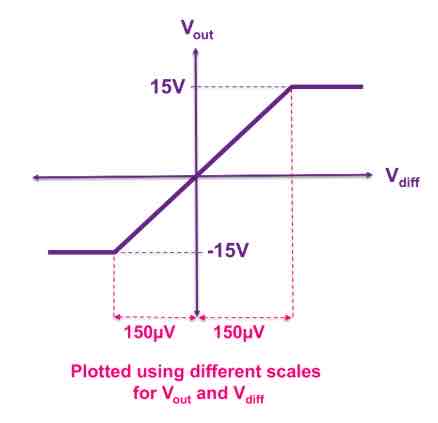
Draw a Vout against Vdiff graph using similar scaled for Vout and Vdiff

How can you amplify larger signals whilst avoiding saturation?
Using feedback to the negative terminal of the op-amp
Compare an open loop Vs. closed loop Op-Amp
A closed loop op-amp:
The voltage gain is low but can be controlled
Larger input signals can be amplified without saturation
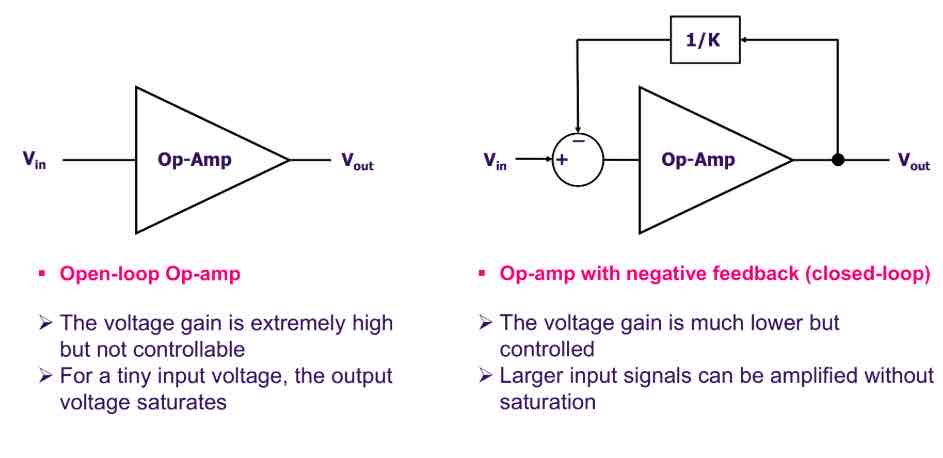
Draw an inverting amplifier circuit
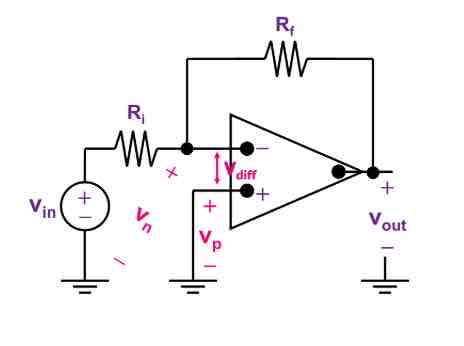
What is the equation for closed-loop gain in an inverting circuit?
Vout/Vin = -Rf/Ri
What is an application for an inverting amplifier circuit?
Summing amplifier
Draw a closed-loop Op-Amp non-inverting circuit

What is the equation for closed-loop gain for a non-inverting amplifier?
1 + Rf/Rs
What is an application for a non-inverting amplifier circuit?
Voltage comparator
What are some Ideal:typical Op-Amp characteristics?
Infinite open-loop voltage gain: high around 300,000+
Infinite input resistance: 100+ Mohms to 1Gohms
Zero output resistance: Low output resistance < 50 ohms
Derive the closed-loop gain ACL equation
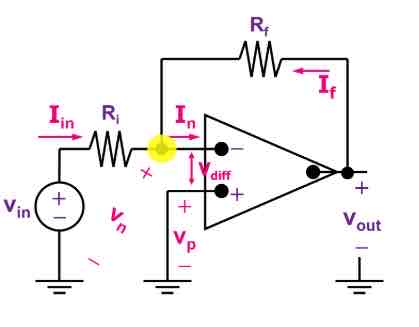
Derive the closed-loop ACL of a non-inverting amplifier

Discuss an Open-loop Op-Amp as a comparator
Closed-loop feedback is not required as it benefits from output saturation.
Give an example of when an Open-loop Op-Amp acts as a comparator
(Where binary decisions are needed) voltage detection
Draw an open loop op amp comparator
